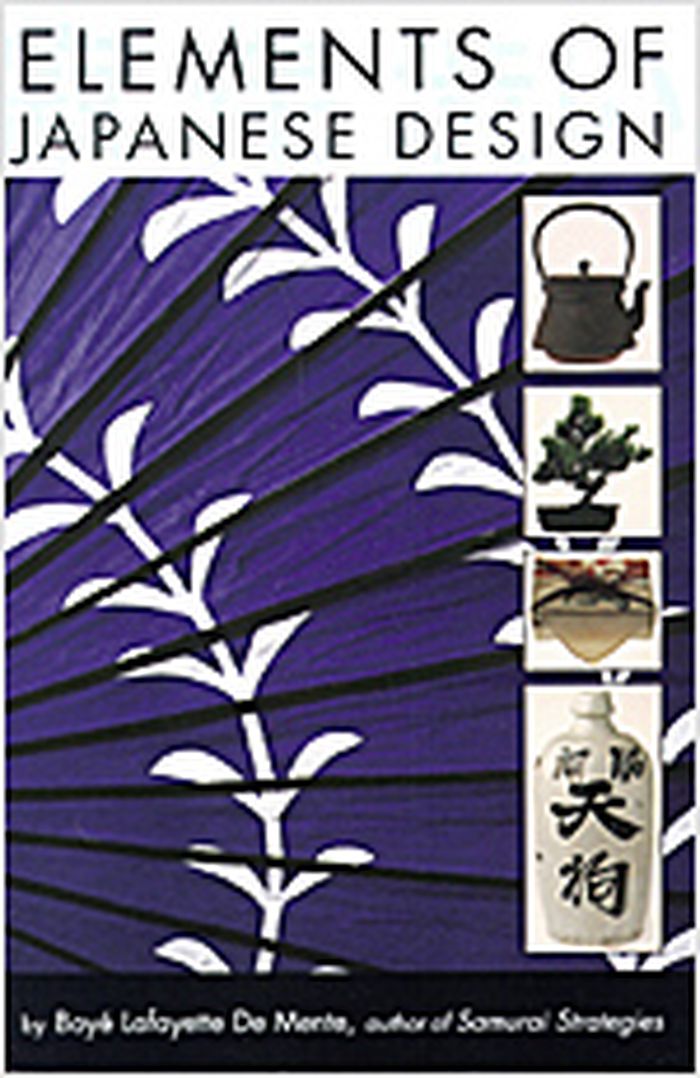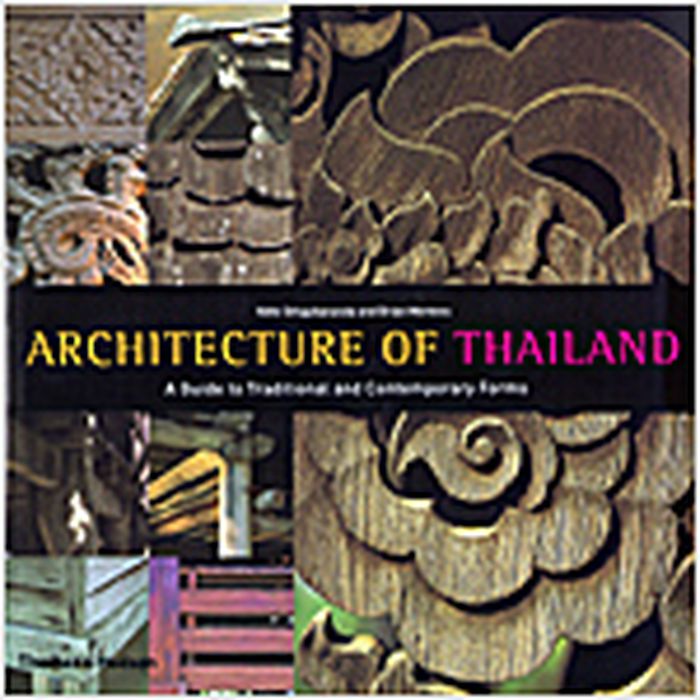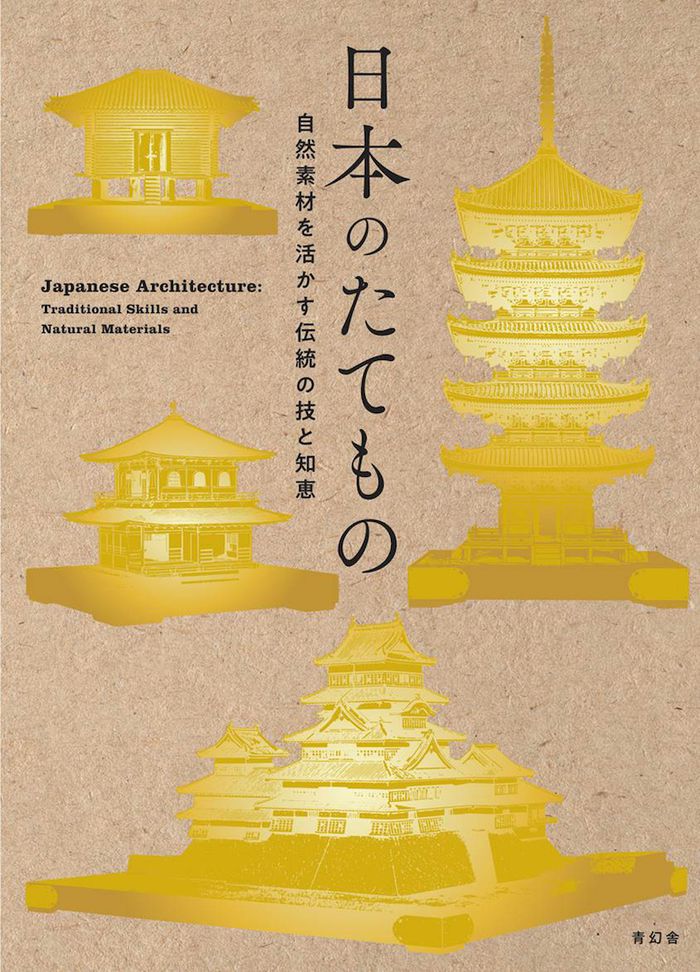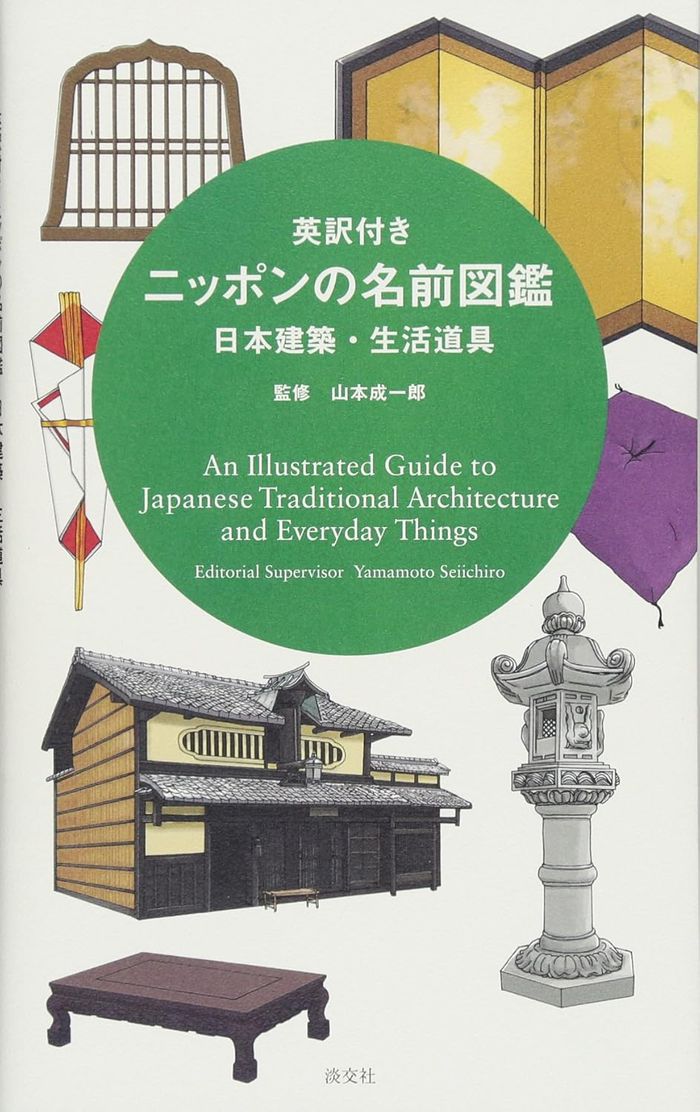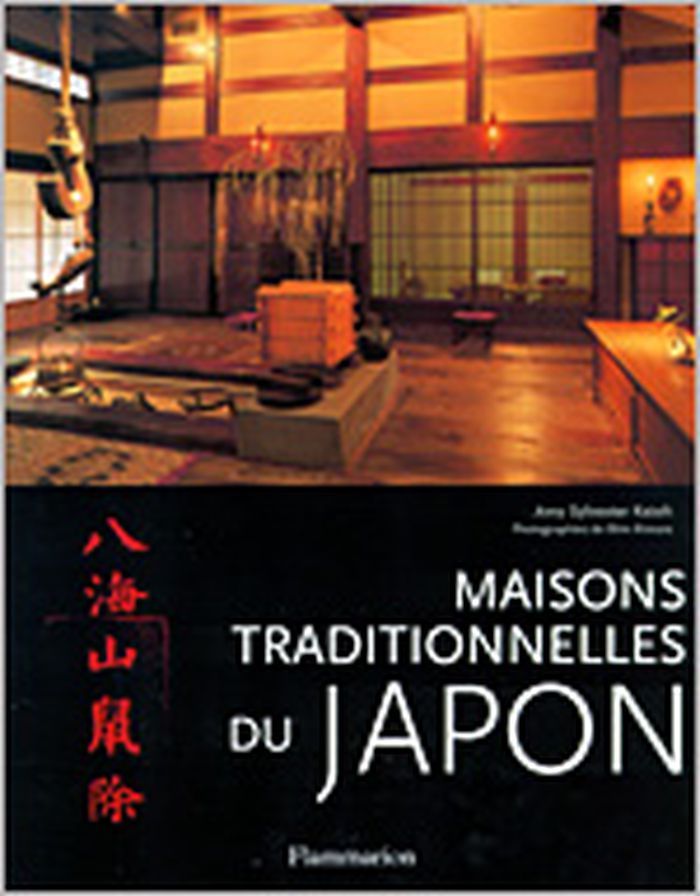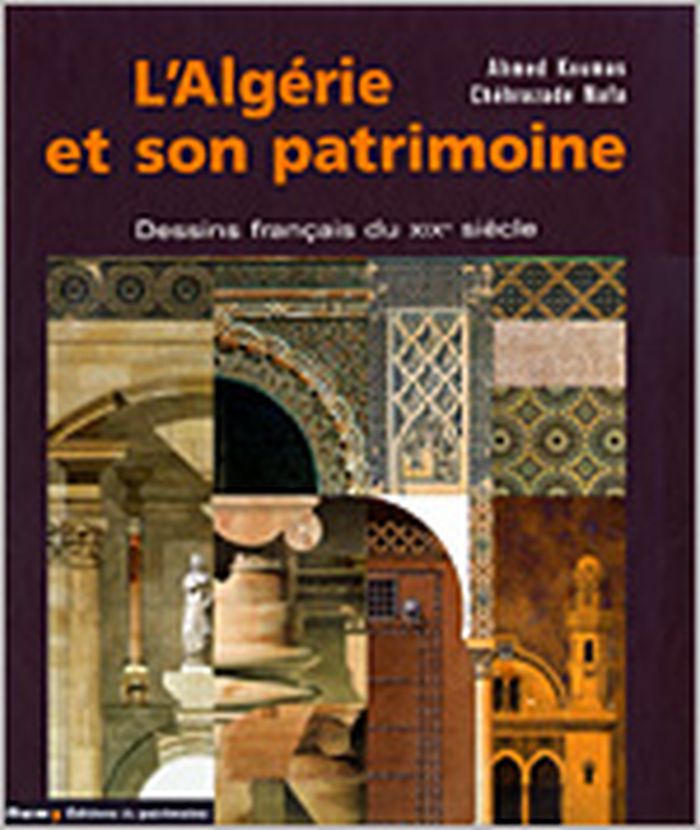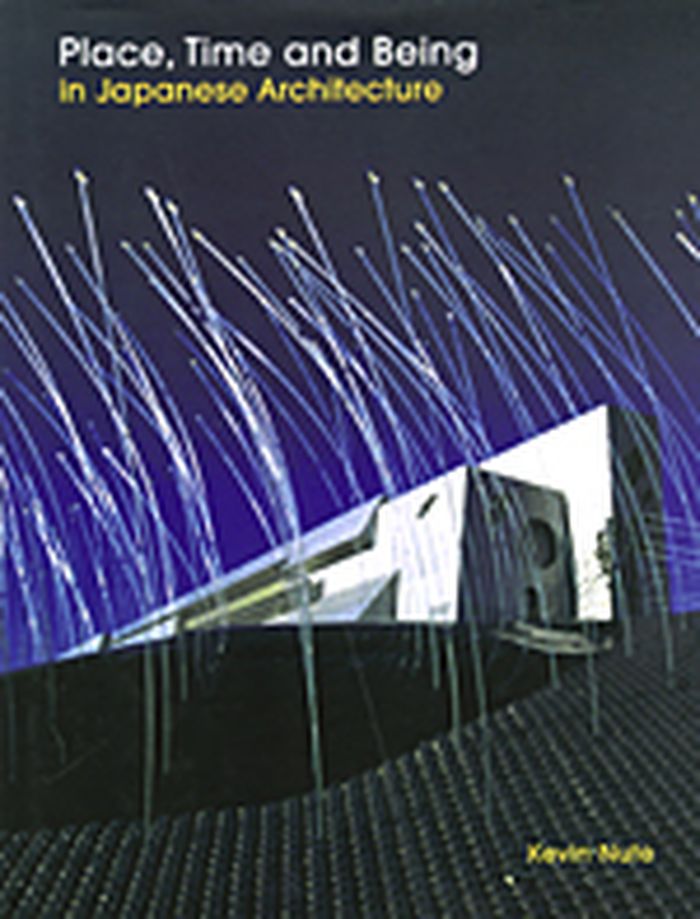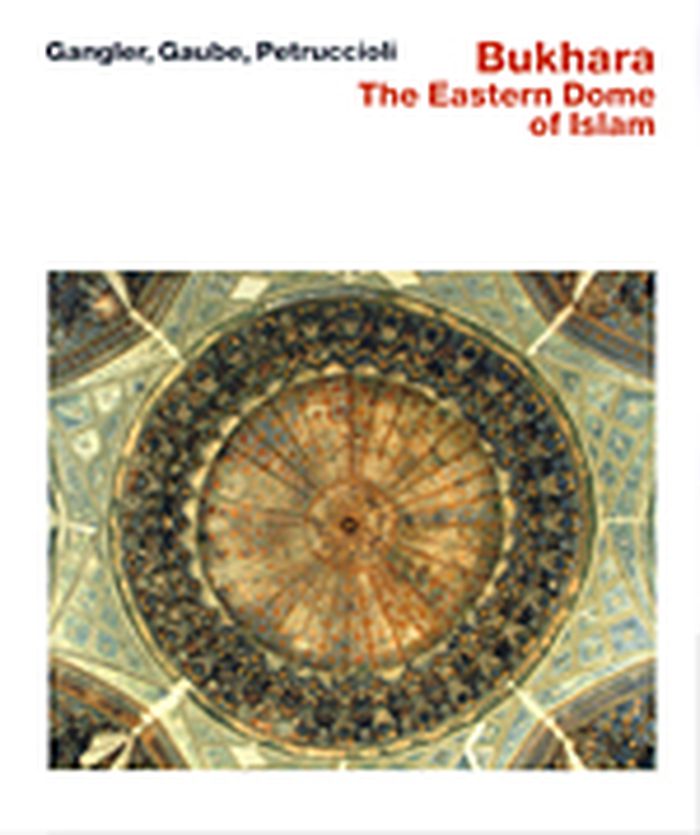Elements of Japanese design
$16.50
(disponible sur commande)
Résumé:
"Elements of Japanese design" introduces 80 key concepts in Japanese design in a readable and accessible short-entry format. Including a brief explanation and examples of every aspect of Japanese design—from Wah (Harmony) to Kaizen (Continuous Improvement), from Mushin (the Empty Mind) to Mujo (Incompleteness).
Histoire jusqu'à 1900, Asie
septembre 2006, Tokyo, Ruthland (Vermont), Singapore
Elements of Japanese design
Actions:
Prix:
$16.50
(disponible sur commande)
Résumé:
"Elements of Japanese design" introduces 80 key concepts in Japanese design in a readable and accessible short-entry format. Including a brief explanation and examples of every aspect of Japanese design—from Wah (Harmony) to Kaizen (Continuous Improvement), from Mushin (the Empty Mind) to Mujo (Incompleteness).
Histoire jusqu'à 1900, Asie
livres
The arts of China after 1620
$74.95
(disponible sur commande)
Résumé:
The Arts of China after 1620 concludes a major three-volume survey that examines China's huge wealth of art, architecture and artefacts from prehistoric times to the present. Beginning with discussions of 'fine' art and painting and progressing to analysis of carving and sculpture, ceramics, glassware and textiles, the authors demonstrate how, in the age of the Emperors(...)
Histoire jusqu'à 1900, Asie
septembre 2006, New Haven / London
The arts of China after 1620
Actions:
Prix:
$74.95
(disponible sur commande)
Résumé:
The Arts of China after 1620 concludes a major three-volume survey that examines China's huge wealth of art, architecture and artefacts from prehistoric times to the present. Beginning with discussions of 'fine' art and painting and progressing to analysis of carving and sculpture, ceramics, glassware and textiles, the authors demonstrate how, in the age of the Emperors Kangxi, Yongzheng and Qianlong, the 'decorative' arts rose to a prominence quite unlike the western experience. Avoiding misrepresentative categorization, they single out period styles, as well as identifying repeated phases of archaism and Buddhist art, and discuss characteristic groups of jade, ivory, ceramics, glassware and textiles. They consider the importance of the imperial workshops and their role in developing craftsmen's skills and encouraging the cross-over of techniques from different disciplines and they present the compelling influence of Emperor Qianlong's aesthetic innovations. In architecture the vast plan and overwhelming authority of the imperial buildings contrasts with the restrained subtlety of domestic architecture and garden design where magnificent rocks were the principal feature, just as in landscape painting. The survey concludes by examining the development of East/West trade and the effects of commercialization on Chinese arts and crafts. This handsome, well-illustrated book provides a scholarly and illuminating resource for all students of the arts of China.
livres
septembre 2006, New Haven / London
Histoire jusqu'à 1900, Asie
livres
Le Japon d'Edo
$26.95
(disponible sur commande)
Résumé:
Geisha et samurai : une image traditionnelle du Japon d'Edo. Ce guide présente les transformations qui caractérisent la société nippone entre le XVIIe et le XIXe siècle : la naissance d'une vie urbaine, l'ouverture sur le monde, les innovations dans les sciences, les techniques et les arts... L'histoire d'un bouillonnement culturel, ou comment une période dite féodale(...)
Histoire jusqu'à 1900, Asie
janvier 2006, Paris
Le Japon d'Edo
Actions:
Prix:
$26.95
(disponible sur commande)
Résumé:
Geisha et samurai : une image traditionnelle du Japon d'Edo. Ce guide présente les transformations qui caractérisent la société nippone entre le XVIIe et le XIXe siècle : la naissance d'une vie urbaine, l'ouverture sur le monde, les innovations dans les sciences, les techniques et les arts... L'histoire d'un bouillonnement culturel, ou comment une période dite féodale s'avéra le creuset du Japon moderne.
livres
janvier 2006, Paris
Histoire jusqu'à 1900, Asie
$84.00
(disponible sur commande)
Résumé:
The book opens with a history of the country and its many cultural influences. An overview of Thai architecture in its context is followed by a look at its basic elements in their variety and structural detail. All types of structures are featured, from Thai houses and rice barns to elaborate temples and breathtaking palaces. The different materials used to achieve the(...)
mai 2006, London
Architecture of Thailand : a guide to traditional and contemporary forms
Actions:
Prix:
$84.00
(disponible sur commande)
Résumé:
The book opens with a history of the country and its many cultural influences. An overview of Thai architecture in its context is followed by a look at its basic elements in their variety and structural detail. All types of structures are featured, from Thai houses and rice barns to elaborate temples and breathtaking palaces. The different materials used to achieve the distinctive Thai style are also discussed. The book also examines the hybrid forms that reflect the confluence of Thai and Western or other Asian styles. It ends with a look at contemporary Thai architecture and how traditional architectural practices have been adapted to suit modern needs.
$52.00
(disponible sur commande)
Résumé:
Traditional Japanese architecture is characterized by the working of natural materials such as wood, earth, and rock into remarkable structures. This precious cultural heritage has been preserved over the years in the form not only of the buildings themselves, but also of scale models created during repairs and other occasions. This book turns to those astoundingly(...)
Japanese architecture: traditional skills and natural materials
Actions:
Prix:
$52.00
(disponible sur commande)
Résumé:
Traditional Japanese architecture is characterized by the working of natural materials such as wood, earth, and rock into remarkable structures. This precious cultural heritage has been preserved over the years in the form not only of the buildings themselves, but also of scale models created during repairs and other occasions. This book turns to those astoundingly precise models to give a historical overview of the artistry and craftsmanship handed down through the generations in buildings of wide-ranging styles and techniques, from the seventh-century five-storied pagoda at Horyuji temple in Nara to the 1933 Nihombashi Takashimaya department store in Tokyo. Also included is a chapter on architectural plans, tools, and other materials illustrating the “traditional skills, techniques and knowledge of the conservation and transmission of wooden architecture in Japan,” which was inscribed on the UNESCO Intangible Cultural Heritage list in 2020. The accompanying discussion details efforts to overcome today’s challenges in passing Japan’s architectural heritage on to the next generation, including attracting and training new artisans, furthering skills, and securing tools and raw materials.
Histoire jusqu'à 1900, Asie
$30.00
(disponible en magasin)
Résumé:
Various things related to traditional Japanese architecture and everyday life are the focus of this illustrated guide. Interestingly, it is intended not only for English readers but also Japanese people who would like to be able to better explain certain things to people from outside their country. A huge number of items, objects, materials, structures, decorative(...)
An illustrated guide to Japanese traditional architecture
Actions:
Prix:
$30.00
(disponible en magasin)
Résumé:
Various things related to traditional Japanese architecture and everyday life are the focus of this illustrated guide. Interestingly, it is intended not only for English readers but also Japanese people who would like to be able to better explain certain things to people from outside their country. A huge number of items, objects, materials, structures, decorative elements, and so on that one encounters while visiting or living in Japan, but might be too obscure or specific to remember the names, or to even imagine from the term, are included in an accessible and very informative format. For each, the Japanese name, English name, and pronunciation are accompanied by an explanation.
Histoire jusqu'à 1900, Asie
$90.00
(disponible sur commande)
Résumé:
En marge des immenses étendues urbaines qui parsèment aujourd'hui l'archipel, l'esprit du Japon vit dans ses maisons de campagne. Amy Katoh - accompagnée de Shin Kimura, l'un des photographes les plus en vue du pays - a voyagé dans un Japon reculé et paisible, à la découverte de ces sanctuaires où le temps semble s'être arrêté. L'ornementation très simple, les(...)
Maisons traditionelles du Japon
Actions:
Prix:
$90.00
(disponible sur commande)
Résumé:
En marge des immenses étendues urbaines qui parsèment aujourd'hui l'archipel, l'esprit du Japon vit dans ses maisons de campagne. Amy Katoh - accompagnée de Shin Kimura, l'un des photographes les plus en vue du pays - a voyagé dans un Japon reculé et paisible, à la découverte de ces sanctuaires où le temps semble s'être arrêté. L'ornementation très simple, les savoir-faire anciens, le respect de règles ancestrales recèlent toute l richesse d'une grande civilisation. En s'appuyant sur 450 splendides photos en couleurs, cet ouvrage présente les visages du Japon d'hier et décrit l'évolution du mode de vie rural traditionnel. C'est un réservoir d'idée inestimable pour tous ceux qui souhaitent faire entrer la nature et la beauté dans leur vie de citadins modernes.
Histoire jusqu'à 1900, Asie
$95.95
(disponible sur commande)
Résumé:
Alors que la notion de patrimoine était encore peu partagée en métropole, dès 1830 de nombreux architectes allèrent inventorier les richesses de l'Algérie. Deux fonds importants relatifs à ces campagnes dormaient depuis dans des bibliothèques françaises: de nombreux relevés et dessins aquarellés à la Médiathèque de l'architecture et du patrimoine et sept albums de(...)
Histoire jusqu'à 1900, Asie
janvier 1900, Paris
L'Algérie et son patrimoine : dessins français du XIXe siècle
Actions:
Prix:
$95.95
(disponible sur commande)
Résumé:
Alors que la notion de patrimoine était encore peu partagée en métropole, dès 1830 de nombreux architectes allèrent inventorier les richesses de l'Algérie. Deux fonds importants relatifs à ces campagnes dormaient depuis dans des bibliothèques françaises: de nombreux relevés et dessins aquarellés à la Médiathèque de l'architecture et du patrimoine et sept albums de l'architecte Delamarre à la Sorbonne. C'est à partir de leur redécouverte que les auteurs du présent ouvrage, eux-mêmes architectes et enseignants originaires d'Algérie, resituent cette autre dimension du fait colonial et soulignent la naissance d'une conscience patrimoniale: de l'inédit pour cette année de l'Algérie en France.
Histoire jusqu'à 1900, Asie
$96.00
(disponible sur commande)
Résumé:
Several of the responsive design strategies revealed in this book are directly applicable beyond Japan where they could make a significant contribution to sustaining natural and cultural diversity globally.
Place, time and being in Japanese architecture
Actions:
Prix:
$96.00
(disponible sur commande)
Résumé:
Several of the responsive design strategies revealed in this book are directly applicable beyond Japan where they could make a significant contribution to sustaining natural and cultural diversity globally.
Histoire jusqu'à 1900, Asie
$110.00
(disponible en magasin)
Résumé:
In this book a city planner, an architect and a historian trace the urban development of this outstanding city and analyse its architecture in urban and historical contexts from its origins in the pre-Islamic period to the situation today.
Histoire jusqu'à 1900, Asie
mai 2003, Stuttgart
Bukhara : the eastern dome of Islam
Actions:
Prix:
$110.00
(disponible en magasin)
Résumé:
In this book a city planner, an architect and a historian trace the urban development of this outstanding city and analyse its architecture in urban and historical contexts from its origins in the pre-Islamic period to the situation today.
Histoire jusqu'à 1900, Asie
